(a) Bryophyta;
(b) K – capsule;
(c) Anchorage; Absorb water and mineral salts;
sharon kalunda answered the question on September 16, 2019 at 08:28
- The chemical equation below represents a physiological process that takes place in living organisms.(Solved)
The chemical equation below represents a physiological process that takes place in living organisms.

Name:
(i) The process R:
(ii) Substance Q:
Date posted: September 16, 2019. Answers (1)
- Explain how the Iris muscle controls the size of pupil when exposed to bright light.(Solved)
Explain how the Iris muscle controls the size of pupil when exposed to bright light.
Date posted: September 16, 2019. Answers (1)
- Explain why tracheids are not efficient in transporting water up the plant.(Solved)
Explain why tracheids are not efficient in transporting water up the plant.
Date posted: September 16, 2019. Answers (1)
- The diagram below illustrates photographs of plants undergoing a certain process. Study them carefully and answer the questions that follow.(Solved)
The diagram below illustrates photographs of plants undergoing a certain process. Study them carefully and answer the questions that follow.
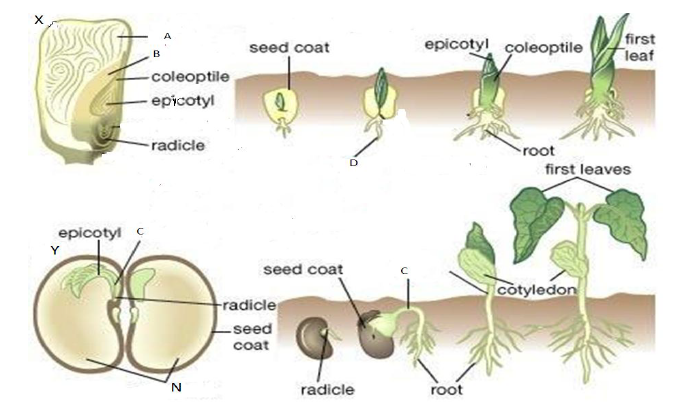
a) i) Name the process illustrated on the photograph.
ii) State two differences in the way the process occurs as illustrated in X and in Y.
b) i) State two roles of part C in the process illustrated above.
ii) State two external factors that are necessary for the process above to take place.
c) Name the parts labelled B and give its function
Name:
Function
d) Using observable features only, name the classes to which the specimen X and Y belong, giving one reason in each case.

Date posted: September 16, 2019. Answers (1)
- The diagram below shows a mammalian eye.(Solved)
The diagram below shows a mammalian eye.
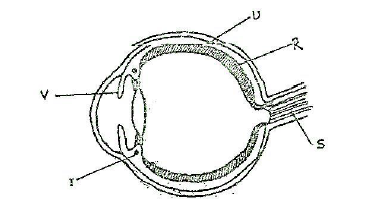
a) Name the parts labeled R, S and T.
b) Give two adaptations of part labeled U.
c) Describe the changes that occur to part V when one moves from a bright room to a dark room.
Date posted: September 16, 2019. Answers (1)
- The figures below represent mammalian tissue as seen under a light microscope.(Solved)
The figures below represent mammalian tissue as seen under a light microscope.
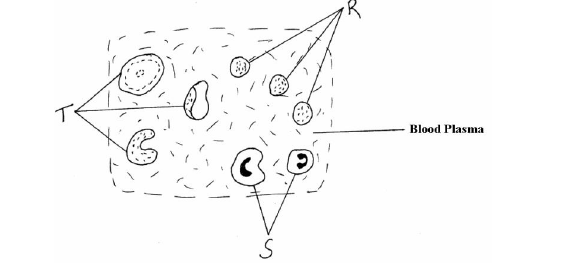
(a) Identify the tissue
(b) Name the cells represented by R,S and T
(c) State the function of structure S and R.
(d) Explain two adaptations of structure T to its function.
(e) Name the hereditary condition a person with structure T is suffering from.
Date posted: September 16, 2019. Answers (1)
- Study the diagrams below and answer the questions that follow.(Solved)
Study the diagrams below and answer the questions that follow.
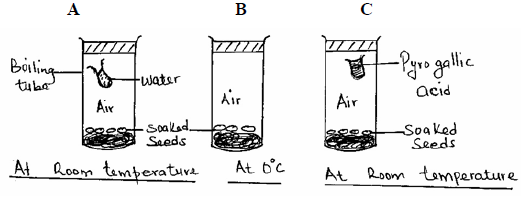
(a) Identify the process being investigated.
(b) With a reason identify the set-up in which germination will occur.
(c) State two roles played by water during germination.
(d) Name three factors inside the seed that causes seed dormancy.
Date posted: September 16, 2019. Answers (1)
- State the role of carnassial teeth in a lion..(Solved)
State the role of carnassial teeth in a lion..
Date posted: September 16, 2019. Answers (1)
- The diagram below shows two potted plants on a laboratory bench near a window.(Solved)
The diagram below shows two potted plants on a laboratory bench near a window.

a) State one observable difference between the plants I and II.
b) State the importance of the process that is seen in plant I.
c) Explain the process that resulted to appearance of the leaves as in plant I above.
d) Suppose a cell from a leaf of each of the plants I and II is mounted and observed under a microscope. Draw a diagram of a cell from each of the plants leaves.
Date posted: September 16, 2019. Answers (1)
- After a colony of penicillin-sensitive bacteria was exposed to antibiotic pencillin, a penicillin resistant emerged. Explain this observation(Solved)
After a colony of penicillin-sensitive bacteria was exposed to antibiotic pencillin, a penicillin resistant emerged. Explain this observation
Date posted: September 16, 2019. Answers (1)
- State the importance of companion cell in phloem tissue.(Solved)
State the importance of companion cell in phloem tissue.
Date posted: September 16, 2019. Answers (1)
- The diagram below represents microvilli on epithelial cells(Solved)
The diagram below represents microvilli on epithelial cells

(a) Name the parts A and C
(b) Name two parts in the human body where the above epithelial cells are found.
Date posted: September 16, 2019. Answers (1)
- During an ecological study of a lake, a group of students recorded the following observations.(Solved)
During an ecological study of a lake, a group of students recorded the following observations.
(i) Planktonic crustaceans feed on planktonic algae;
(ii) Small fish feed on planktonic crustaceans, worms and insect larvae;
(iii) Worms feed on insect larvae;
(iv) A bird species feeds on small fish, planktonic crustaceans, worms and large fish;
(v) Insect larvae feed on planktonic algae;
(vi) Large fish feed on small fish.
(a) From this record of observations, construct a food web.
(b) From the food web, isolate and write down a food chain that ends with:-
(i) Bird species as a secondary consumer.
(ii) Large fish as a tertiary consumer.
(c) The biomass of the producers in the lake was found to be greater than that of primary consumers. Explain this observation.
(d) Using the food web, identify three pairs of organisms that compete for food in the lake and for each case, name the food being competed for.
(e) (i) State three ways by which human beings may interfere with this lake ecosystem.
(i) Explain how each of the ways stated in (e) (i) above may affect life in the lake.
Date posted: September 16, 2019. Answers (1)
- A person walked bare feet in a swampy area. After a few weeks he started experiencing abdominal pains and diarrhoea. His urine and stool contained...(Solved)
A person walked bare feet in a swampy area. After a few weeks he started experiencing abdominal pains and diarrhoea. His urine and stool contained blood.
(a) Name the disease the person was likely to be suffering from and the causative agent of the disease
(i) Disease
(ii) Causative agent
(b.) Apart from avoiding walking bare feet in swampy area. State two other ways of controlling the disease.
Date posted: September 13, 2019. Answers (1)
- Explain the meaning of homoiothermic.(Solved)
Explain the meaning of homoiothermic.
Date posted: September 13, 2019. Answers (1)
- You are provided with photographs of animals. Study the photographs and the dichotomous key below to enable you identify the taxonomic group to which each...(Solved)
You are provided with photographs of animals. Study the photographs and the dichotomous key below to enable you identify the taxonomic group to which each animal belongs.
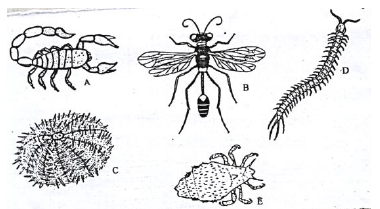
KEY
1. a) Jointed legs present ………………………………………………………………go to 2
b) Jointed legs absent………………………………………………………………..go to 7
2. a) Three pairs of legs ………………………………………………………………..go to 3
b) More than 3 pairs of legs………………………………………………………….go to 5
3. a) Wings present …………………………………………………………………….go to 4
b) Wings absent………………………………………………………………………Anoplura
4. a) One pair of wings…………………………………………………………………Diptera
b) Two pairs of wings……………………………………………………………Hymenoptera
5. a) Four pairs of legs ………………………………………………………………… Arachnida
b) More than ten pairs of legs ………………………………………………………. go to 6
6. a) One pair of legs in each body segment…………………………………………… Chilopoda
b) Two pairs of legs in each body segment ………………………………………… Diplopoda
7. a) Body partially enclosed in a shell………………………………………………… Mollusca
b) Body surface has spiny projection…………………………………………….Echinodermata
a) Using the key, identify the following organisms to their taxonomic groups. In each case, give the sequence of steps which you followed in identifying them.

b) i) Using observable features only, state the class to which the animal labeled A and B on the photographs above belong.State two observable features on B, that enabled you to arrive at that answer in (b) (i) above.
Date posted: September 13, 2019. Answers (1)
- Study the reaction below and answer the questions that follow.(Solved)
Study the reaction below and answer the questions that follow.

a) What biological processes are represented by A and B?
b) Identify the product Y.
c) State the bond represented by X.
Date posted: September 13, 2019. Answers (1)
- A student divided a small air tight box into two chambers with wire mesh. In one chamber he kept a number of rats and in...(Solved)
A student divided a small air tight box into two chambers with wire mesh. In one chamber he kept a number of rats and in the other a number of potted plants. What was likely to happen if the box was placed in the dark for two hours? Explain your answer.
Date posted: September 13, 2019. Answers (1)
- Describe what happens in the first phase of aerobic respiration.(Solved)
Describe what happens in the first phase of aerobic respiration.
Date posted: September 13, 2019. Answers (1)
- State one example of chromosomal mutation that lead to
(i) Change in chromosomal structure
(ii) Change in chromosomal number(Solved)
State one example of chromosomal mutation that lead to
(i) Change in chromosomal structure
(ii) Change in chromosomal number
Date posted: September 13, 2019. Answers (1)